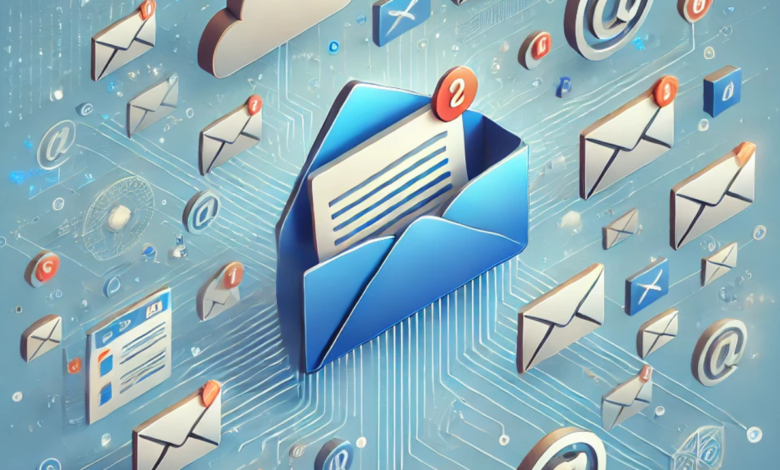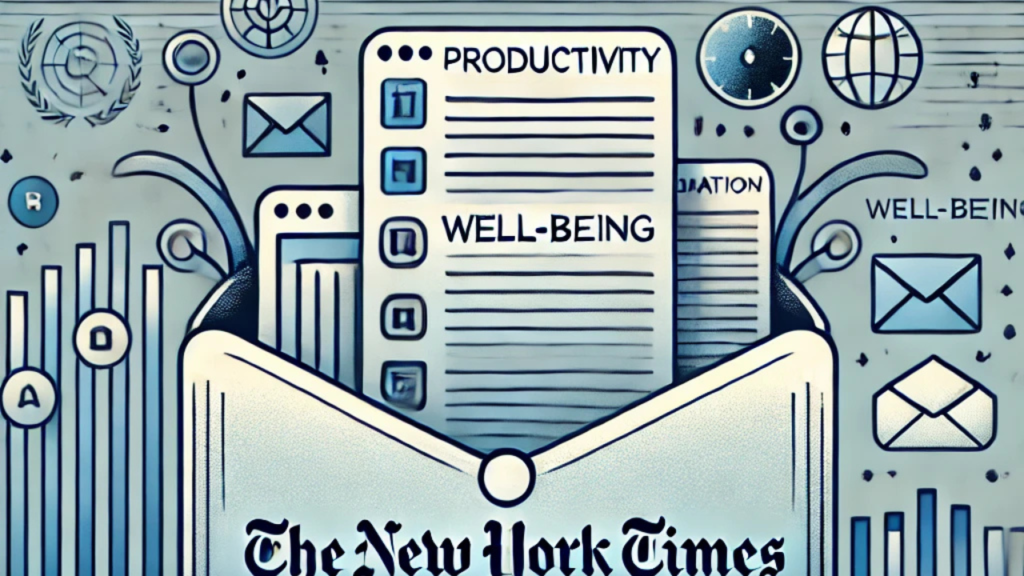The Hidden Depths of Your inbox contents nyt Decoding

Introduction: Understanding the Concept of Inbox Contents
An inbox contents nyt is more than just a digital container for messages. It represents a crucial tool in modern communication, shaping how individuals interact with others professionally and personally. Traditionally, the term “inbox” referred to the physical tray on an office desk where incoming mail was placed. Over the decades, it has transformed into a digital hub accessible via email clients, messaging platforms, and productivity tools. The significance of an inbox contents nyt has expanded, reflecting broader societal changes in communication and technology.
The New York Times has explored the concept of “inbox contents” extensively, shedding light on the evolving dynamics of digital correspondence. From email etiquette to managing communication overload, the newspaper has delved into global issues that resonate with readers. Understanding these discussions is vital, as it helps individuals navigate the complexities of modern communication while optimizing their digital lives.
The New York Times Approach to “Inbox Contents”

Editorial Insights
The New York Times has long been a pioneer in exploring the nuances of modern communication. Its editorial approach to “inbox contents nyt contents” emphasizes practicality, providing readers with actionable advice while exploring societal trends. Articles on “email overload” and “digital detox” are designed to educate and empower readers. These insights often stem from collaborations with industry experts, psychologists, and tech analysts, ensuring a well-rounded perspective.
Analysis of Reader Engagement
Reader engagement metrics reveal the popularity of inbox-related articles. Stories focusing on decluttering, productivity tools, and strategies for effective communication consistently garner high traffic. For instance, case studies of professionals achieving “inbox contents nyt zero” serve as aspirational narratives that resonate with a broad audience. By analyzing these trends, the New York Times tailors its content to address the most pressing concerns of its readership.
Themes in Inbox Coverage
Recurring themes in inbox contents nyt coverage include productivity, digital well-being, and cultural shifts in communication. Articles explore how individuals can streamline their email habits to save time and reduce stress. The societal implications of inbox behaviors, such as the expectation of constant availability, are discussed, offering readers a deeper understanding of how inboxes shape modern life.
Key Challenges Highlighted by Inbox Contents
Information Overload
One of the primary challenges of inbox contents nyt management is information overload. Studies indicate that the average professional receives over 120 emails daily, significantly damaging time and mental resources. Unchecked, this influx can lead to missed opportunities, decreased productivity, and heightened stress levels. The New York Times highlights these issues, encouraging readers to adopt structured approaches to handle their inboxes effectively.
Digital Etiquette and Miscommunication
Email and digital messaging are fraught with the potential for miscommunication. The lack of face-to-face interaction can lead to misunderstandings from ambiguous subject lines to unintended tone in written text. The New York Times frequently addresses these pitfalls, emphasizing the importance of clear, concise, and respectful communication. Articles provide practical tips for improving digital etiquette, such as using descriptive subject lines and responding promptly to time-sensitive messages.
Privacy and Security Concerns
The vulnerability of inbox contents to hacking and data breaches is another critical issue. Cybercriminals often target email accounts to access sensitive information. The New York Times educates readers on safeguarding their inboxes by using strong passwords, enabling two-factor authentication, and being cautious about phishing attempts. By adopting these measures, individuals can protect their personal and professional correspondence from malicious actors.
Best Practices for Managing Inbox Contents
Decluttering Strategies
Achieving a manageable inbox contents nyt requires consistent effort and the right tools. Decluttering strategies, such as sorting messages into folders or archiving non-essential emails, can make a significant difference. The New York Times often recommends tools like email filters, which automatically sort incoming messages based on predefined criteria. By implementing these techniques, users can reduce visual clutter and focus on high-priority tasks.
Prioritizing Communication
Not all messages demand immediate attention. The New York Times emphasizes the importance of prioritizing communication to avoid being overwhelmed. Strategies such as categorizing emails by urgency and setting specific times for email review can enhance productivity. Tools like “starred” messages or “read later” features enable users to manage their inboxes effectively without neglecting essential tasks.
Embracing Minimalism
The minimalist approach to inbox management advocates for simplicity and intentionality. Users can create a streamlined inbox contents nyt by limiting subscriptions, unsubscribing from unnecessary newsletters, and deleting redundant messages. Success stories in the New York Times showcase individuals who have embraced minimalism, achieving greater focus and reduced stress in their digital lives.
The Broader Implications of Inbox Contents
Impact on Mental Health and Productivity
The state of one’s inbox often reflects their mental state. A cluttered inbox can lead to feeling overwhelmed, contributing to decision fatigue and decreased productivity. The New York Times highlights research showing that organized inboxes are linked to better time management and reduced anxiety. By adopting healthier habits, readers can improve their mental well-being while maximizing efficiency.
Future of Inbox Management
The future of inbox management is poised to be shaped by technological advancements. Artificial intelligence and machine learning are already transforming email platforms, offering predictive replies, spam detection, and intelligent categorization features. The New York Times’ tech experts predict that these innovations will continue evolving, enabling users to interact more intuitively and efficiently with their inboxes.
Conclusion
Understanding and managing inbox contents is a vital skill in the digital age. The New York Times’ coverage provides valuable insights, addressing information overload, miscommunication, and security risks. By implementing the best practices discussed, individuals can take control of their inboxes, enhancing productivity and mental well-being.
Modern inbox management is not just about staying organized; it’s about creating space for meaningful communication and reducing the stress associated with digital correspondence. As technology evolves, staying informed and adopting innovative strategies will empower users to optimize their inbox experiences.
FAQs
What are “inbox contents,” and why are they important?
Inbox contents refer to the messages, notifications, and files stored in an individual’s email or messaging platform. They are essential as they often contain critical information for personal and professional communication.
How does the New York Times approach the topic of inbox management?
The New York Times provides comprehensive insights into inbox management, focusing on productivity, digital well-being, and societal implications of communication habits.
What is “inbox zero,” and is it achievable?
Inbox zero is where all emails have been read, sorted, or archived, leaving the inbox empty. While achievable, it requires consistent effort and effective strategies.
How can I protect my inbox from privacy and security risks?
To protect your inbox, use strong passwords, enable two-factor authentication, and be vigilant against phishing attempts and suspicious links.
Are there tools recommended for managing my inbox effectively?
Tools like email filters, automation software, and prioritization apps can help streamline inbox management.
How does managing inbox content impact mental health and productivity?
A well-managed inbox reduces stress, improves focus, and enhances time management, improving mental health and productivity.
What role does AI play in improving inbox management?
AI streamlines inbox management by offering predictive replies, spam filtering, and intelligent categorization, helping users handle messages more efficiently.


